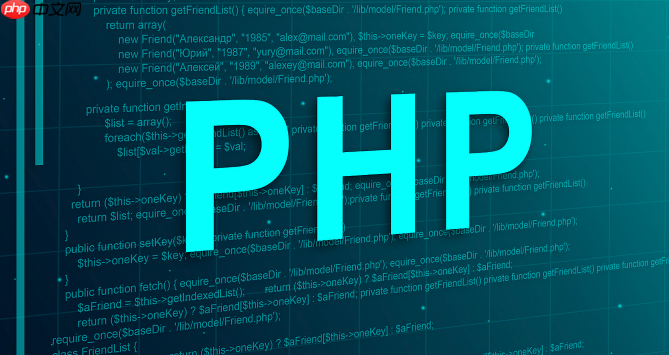Use php -r to execute inline PHP code without files, e.g., php -r "echo 'Hello, World!';". 2. Run a PHP file via php script.php. 3. Pass arguments accessible through $argv. 4. Make scripts executable with #!/usr/bin/env php and chmod +x. 5. Validate syntax with php -l.

If you want to execute PHP code or scripts from the command line, using the PHP CLI is a straightforward approach. Here are several methods to achieve this:
The operating environment of this tutorial: MacBook Pro, macOS Sonoma
1. Execute Inline PHP Code with -r Option
The PHP command-line interface provides the -r option to run PHP code directly without creating a file. This is useful for quick tests or small operations.
- Open your terminal.
- Type php -r "echo 'Hello, World!';" and press Enter.
- You should see the output immediately in the console.
Note: Do not include tags when using the -r flag.
立即学习“PHP免费学习笔记(深入)”;
2. Run a PHP Script File
You can execute a standalone PHP file by passing its path to the php command. This is the most common way to run PHP applications via CLI.
- Create a file named test.php with content:
- In the terminal, navigate to the directory containing the file using cd.
- Run php test.php.
- The script output will be printed directly to the terminal.
3. Pass Arguments to PHP Scripts
PHP CLI allows passing arguments to scripts, which can be accessed via the $argv and $argc variables inside the script.
- Modify your test.php file to include:
- Execute it with arguments: php test.php arg1 arg2.
- The output will show an array of passed arguments including the script name.
4. Use Shebang for Direct Execution
On Unix-like systems, you can make a PHP script executable by adding a shebang line at the top and setting file permissions.
- Add #!/usr/bin/env php as the first line in your test.php file.
- Make it executable: chmod +x test.php.
- Run it directly: ./test.php.
This method treats the PHP script like a native shell script.
5. Check PHP Syntax Without Execution
Before running a script, you can validate its syntax using the -l (lint) option to prevent runtime errors.
- Run php -l test.php to check for parsing errors.
- If the syntax is correct, you'll receive a message confirming no syntax errors were detected.
This is especially helpful when debugging large scripts or deploying code.































